An enormous, bulging, or dropping tummy in a dog is typically a sign of concern. There might be multiple explanations for the dog’s tummy drooping on one level, according to its maturity level, height, sex, and it’s typing.
It might be as simple as your dog wolfing down too quickly or in excess, or it may be a condition more catastrophic like Cushing’s syndrome or tumors.
It is important to consult a veterinarian if you observe any unusual drooping or bloating of the belly. Some disorders can be cured with drugs, whereas others necessitate hospitalization and emergency care.
Dog’s Stomach Sagging on One Side: Causes and Remedies
Here are some possible causes for your dog’s tummy sagging:
1. Bloating
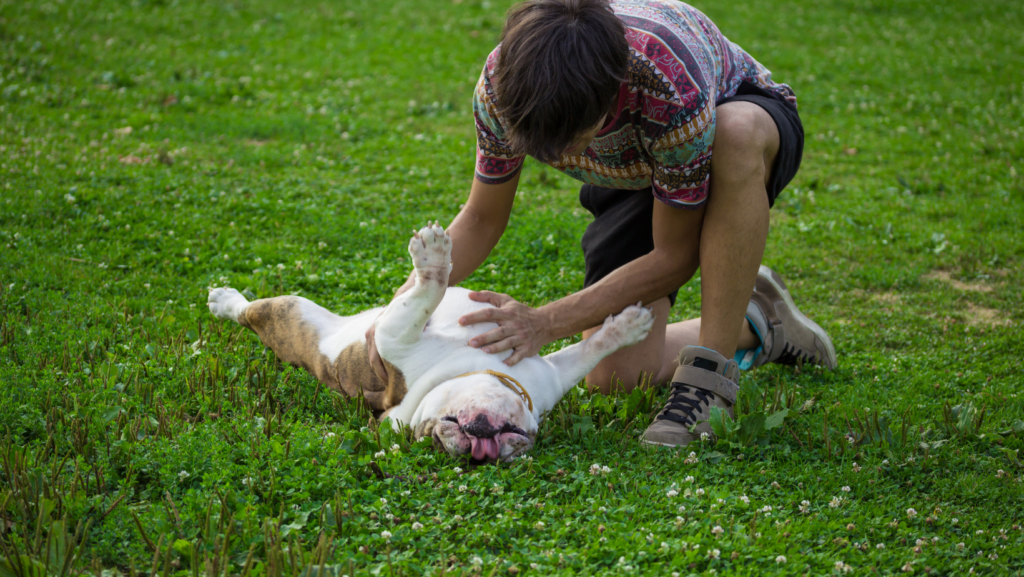
This is a prevalent medical condition in canines. However, bloating can be hazardous to your dog if not treated. It may even be lethal.
Your dog’s stomach begins to stretch out whenever the dog’s stomach becomes full of gas, foodstuff, or liquids. This growth can be hazardous because it exerts strain on surrounding tissues. This condition is known as Gastric Dilation Volvulus.
In extreme situations of bloat, the belly of the animal can spiral. Sometimes dogs get so debilitated from the discomfort that they should be transported to the vet.
Even with active management, this kind of bloat can indeed be deadly in canines. This is because the accumulation in the tummy can prevent blood from flowing to the heart first from the back legs and then the stomach.
Furthermore, whenever the belly rotates, the spleen and the pancreas might become entangled. Consequently, the pancreas may generate harmful substances that may cause the dog’s heart to stop beating.
Asides from a sagging stomach, a dog with bloat can show restlessness, retching, and drooling. You can also notice your dog go around in circles and exhibit pain when you press on its tummy. In serious situations, the dog may get drowsy, have breathing difficulties, or have a rapid heart rhythm.
There is no definitive cause of bloating. Veterinarians are conscious that the belly can be filled with air and spiral, but they are unknown what causes this illness. Having a single heavy meal a day, jogging about immediately after eating, pushing down their meals rapidly, or consuming excessive water are all possible causes of bloating in canines.
Dogs with deep chests are more likely to get bloated.
Treatment
The veterinarian will concentrate on alleviating the tension that has built up within the abdomen. The vet will accomplish this by inserting a tube into the dog’s esophagus and the gut. A tubular needle may well be introduced to alleviate the pressure in a distorted belly.
Fluids, as well as medications, would be administered to the dog. If the tummy is deformed, the dog would be rushed into surgery to reposition the organ. If the stomach lining is injured, the afflicted portion is excised.
The stomach might consequently be hooked to the wall of the stomach to prevent recurring problems.
Because bloating is caused by various reasons, it can be hard to avoid the sickness. Nevertheless, tactics such as serving numerous little meals each day, utilizing slow feeder dishes, and receiving good anxiety and stress management treatment can aid in the prevention of bloat.
2. Peritonitis
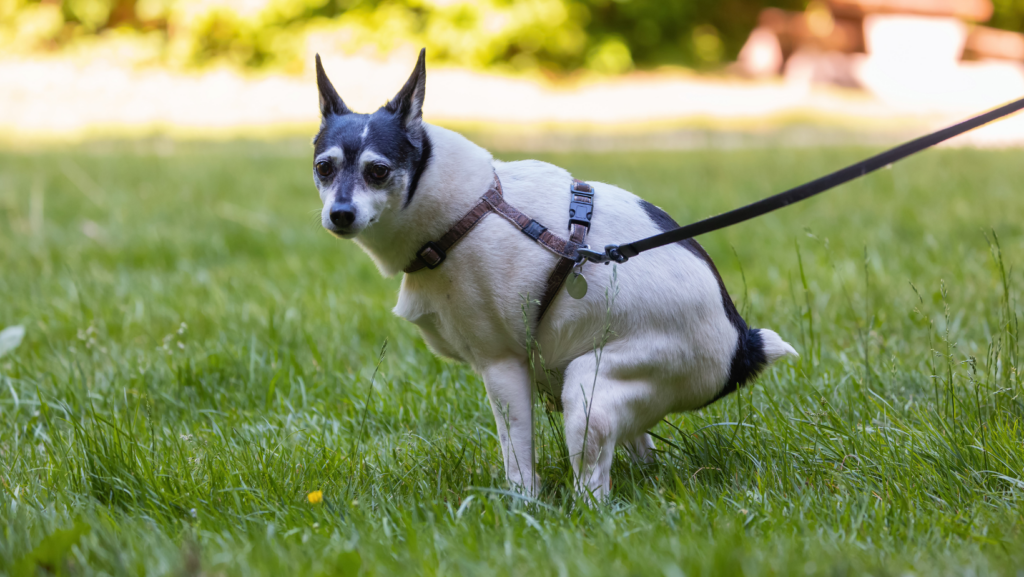
The peritoneum is quite a layer that borders the abdomen and keeps the organs lubricated. Peritonitis is a potentially fatal disorder that occurs when this membrane becomes irritated. In addition, trauma or an illness could cause inflammation.
If the dog is left unattended, the situation might be devastating. Inspection, blood testing, and x-rays are used to identify the disorder. For verification, a sampling of the abdominal fluids will be analyzed.
Nausea, vomiting, abdominal swelling, constipation, dehydration, low blood pressure, and fever are common signs of peritonitis in canines.
Peritonitis can also occur in a dog after injury or trauma. It can also occur if your dog may also have ingested a foreign substance, resulting in gastrointestinal obstructions.
Peritonitis can also be triggered by internal disorders such as a punctured bladder, ulceration in gut walls, hepatic infection, and bloat, among many others. However, the disease is not inherited.
Treatment
If the dog is confirmed with peritonitis, it must be hospitalized. The dog’s stability will be prioritized. To control complaints, the dog will be prescribed antibiotics, intravenous fluids, electrolytes, plasma transfusions, and other drugs.
The dog should be transported to the veterinarian in the event of injury or an intestinal blockage. The veterinarian will carefully rinse the abdomen to verify that there aren’t any irritants along the way.
3. Ascites

Ascites is a disorder in which your dog’s abdominal pouch accumulates with fluid. The illness, also termed abdominal edema, is usually secondary. Nevertheless, the main cause could be an illness or organ damage.
Unless the underlying problem is addressed, the fluids will continue to collect in the puppy’s abdomen. Pain, decreased appetite, shocks, trouble breathing, convulsions, heavy panting, and exhaustion indicate ascites in dogs.
Treatment
The plan of care for ascites is determined by the underlying illness that causes excess fluid. As a result, medicine, antibiotics, beta-blockers, or surgeries may be used in the management.
If the complaints are moderate, the veterinarian may prescribe a low-sodium diet. Diuretics may also be used to help the body eliminate salt. If the condition worsens, the fluid in the dog’s belly will be drained to help him feel better.
4. Worms/Parasites
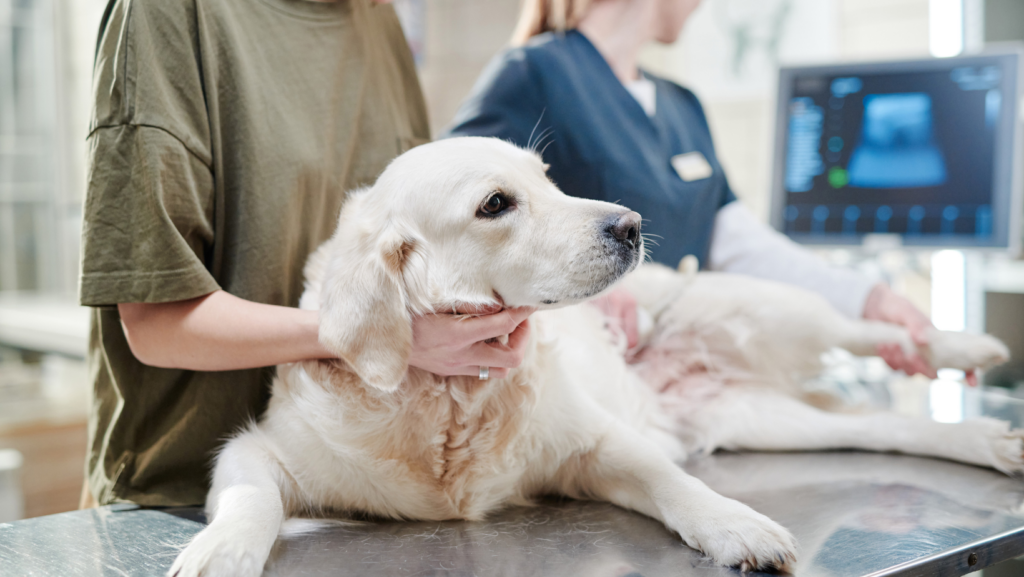
Puppies with flabby or bloated tummies must be presented to the veterinarian. Pups are especially vulnerable to parasites in their first few weeks of existence. So if your dog has a droopy or sunken tummy, book an appointment with your veterinarian.
A dog with parasitic worms may exhibit symptoms such as fatigue, abdominal discomfort, vomiting, diarrhea, weakness, bloody stool, and loss of weight, in addition to a drooping or swollen belly.
Treatment
Your veterinarian can analyze a stool sample to establish whether your dog needs parasite treatment. Treatment is based on the kind of worms that have infected your canine.
Read More: Is It Normal For A Puppy To Have A Big Belly?
5. Cushing’s disease

Cushing’s disease affects the adrenal glands of puppies. It leads them to manufacture an excess of hormones. Consequently, your dog’s muscular tension will deteriorate, and fat may become more visible in specific regions.
This disease may be triggered by several distinct serious illnesses, such as generating adrenal gland tumors, pituitary tumors, or extended usage of corticosteroids over time.
Prolonged exposure to steroid-containing pharmaceuticals such as dexamethasone, prednisolone, ear drops, or even other treatments may also be a reason.
Cushing’s is a dangerous illness that creates a droopy stomach and can cause other regions to lose shape. Hair loss, fatigue, skin diseases, excessive water consumption, muscle weakness, and increased urination are all possible symptoms.
Because the illness frequently impacts older dogs, the indications may be mistaken for aging. As a result, expressing your worries to the veterinarian and having the necessary testing performed is essential.
Treatment
It is critical to schedule a vet consultation as quickly as possible. Your veterinarian will perform a battery of tests to determine the root reason.
The pituitary gland tumor is frequently harmless and tiny in size. However, surgery is not the preferable option. Alternatively, oral medicines are used to prevent harm to the adrenal cortex while controlling cortisol levels.
The dog must be closely observed since the adrenal cortex shouldn’t be damaged. Surgery may be undertaken in the event of adrenal gland tumors. However, the treatment isn’t guaranteed to be permanent.
6. Hernia
If your dog has recently gotten neutered and has no exercise limitations, they may tear the stitching. This could cause your dog to get a hernia.
A hernia is a rupture in the musculature or the membrane. They are not usually a cause for alarm, but they might be. Your veterinarian can advise you on how to keep track of it. If the rupture is severe, further operation may be required.
7. Hormonal changes or unwanted pregnancy in female dogs
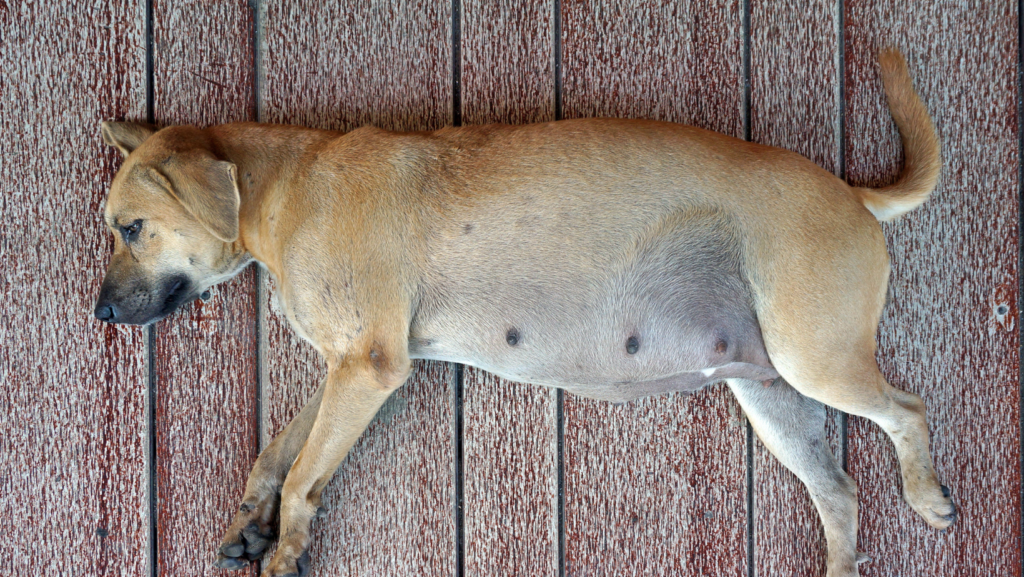
A female dog’s abdomen may droop due to hormonal fluctuations such as the heat cycle, false pregnancy, or pregnancy.
Your female dog will enter heat twice to three times yearly if she is not neutered. Indications like vaginal discharge, belly bloating, and frequent urine are common when a dog is in season.
Female dogs who are not neutered might also have fake conceptions. For example, the hormones released during the heat cycle might fool the dog’s body into believing it is expectant. As a result, the dog may exhibit uneasiness and decreased physical activity levels. You may also see your dog engaging in maternal behaviors such as nesting.
If the dog is pregnant, it will exhibit a belly approximately 40 days into its cycle.
Female unneutered canines entering into the season is a naturally occurring phenomenon. However, it would help if you use caution during the period. The female dog will secrete hormones that suggest she is ready to reproduce and amenable to mating.
The dog’s reproductive organs will begin manufacturing substances to receive the foetus and maintain conception after the oestrous phase of the heat cycle. The hormone synthesis will persist if the dog falls pregnant. However, hormone secretion will decrease if there is no baby.
Treatment
Consider having your dog spayed if you don’t want it to go into season or become pregnant. Both ovaries and uterus could be surgically removed.
In most cases, no special treatment is needed for a fake pregnancy. This is because the effects will go away once the hormonal synthesis ceases. However, if necessary, the vet will administer medications based on the clinical indications of the dog.
If an unintended pregnancy or a conception threatens the dog’s health, consult your veterinarian about safe abortion.
Also Read: 8 Dog Food Brands To Avoid [+ 5 You Should Buy]
8. Tumors
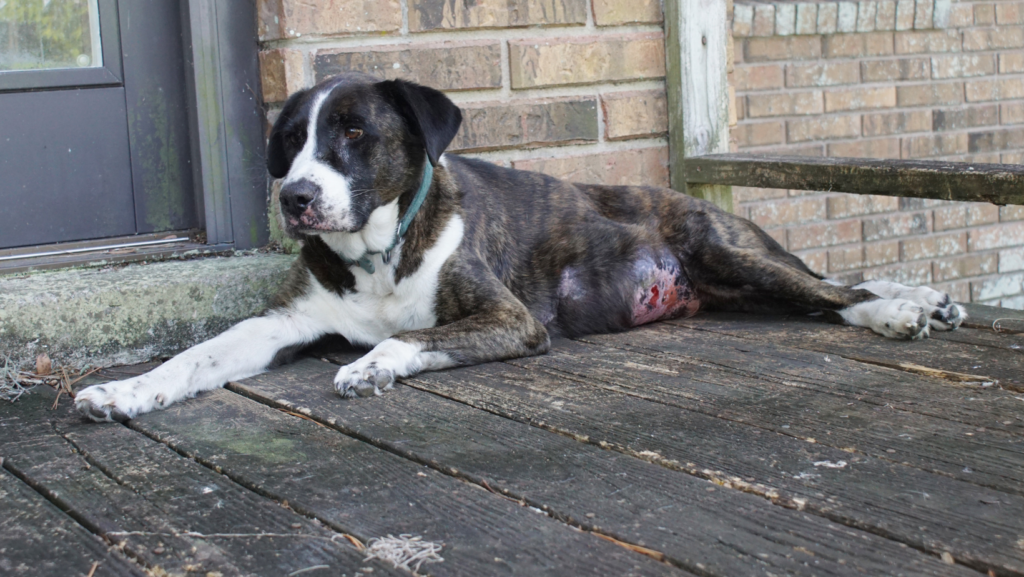
Tumors, in addition to the previously stated factors, could explain why the dog’s tummy sags. Tumors in the big or small intestines, or any place on the digestive tract, can occur in dogs. Even if the tumors are harmless, they must be treated by a veterinarian.
Conclusion
If your puppy’s sagging stomach is merely related to breeding kind, age, or loss of weight, you may enjoy your dog’s extra skin. However, if it is a medical problem, your vet will create a strategy to help you monitor the progression of any underlying health factors that can cause your dog’s stomach to sag.
It would help if you examined your dog’s tummy frequently. This is significant since many health issues that might induce stomach abnormalities can be severe if left untreated. If you observe anything out of the ordinary, notify your veterinarian and arrange a meeting.
Meet Madison Phillips, your compassionate guide to pet well-being. With experience from VCA Animal Hospitals and Laxton Vet Clinics Bellaire Inc. Madison honed her skills and embraced the balance of medical expertise and compassion, through her articles, she simplifies pet care, whether you’re a newbie or an experienced pet parent.

